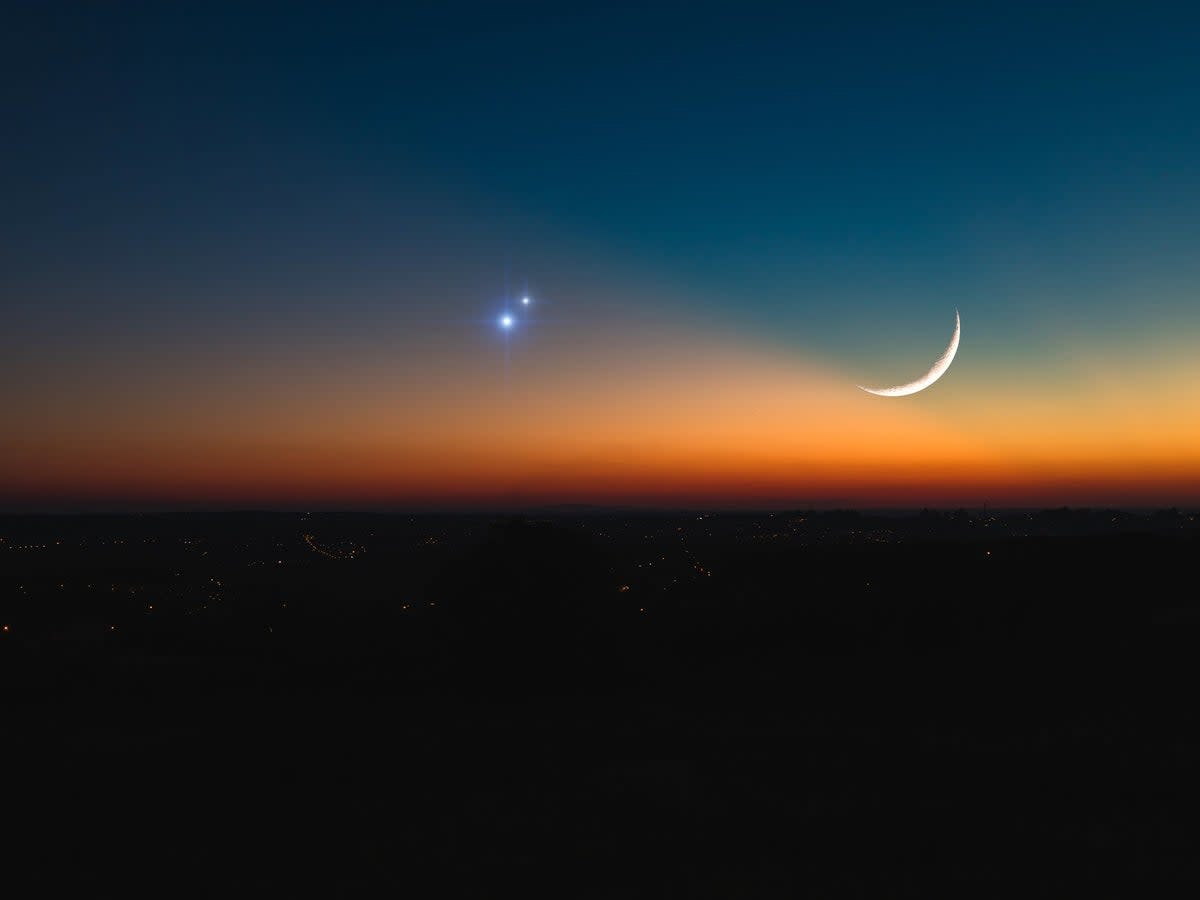Jupiter and Venus conjunction will see planets ‘kiss’ for final time in 16 years

After sharing a cosmic ‘kiss’ on Wednesday night, Jupiter and Venus will once again appear close together in the night’s sky on Thursday.
The conjunction, which will be visible to the naked eye, is the closest that the two planets will come for viewers from Earth until 2039.
At their closest point, Jupiter and Venus will be just half a degree apart – about the diameter of a full moon – despite being more than 600 million km (400 million miles) away from each other in the Solar System.
The best time to see them will be around twilight just after the Sun has set, with the two planets appearing close to the horizon and brighter than any object in the sky apart from the Moon.
Weather conditions over the UK are not ideal for viewing the celestial event on Thursday, with forecasts from the Met Office showing cloud cover over large parts of the country.
Anyone whose view is blocked can still see the Venus and Jupiter conjunction through an online live stream provided by the Virtual Telescope Project.
The stream, which starts at 6.30pm GMT on Thursday, is titled ‘The Kiss between Venus and Jupiter’.
It is one of several night sky events noted by Nasa for March, which include a full Moon on 7 March and a superior conjunction of Mercury on 17 March.
On Thursday night, the bright star Pollux, which forms part of the Gemini constellation, will also appear near the Moon.
“Thursday evening into Friday morning, 2 to 3 March, 2023, the bright star Pollux (the brighter of the twins in the constellation Gemini) will appear near the waxing gibbous Moon,” the US space agency notes.
“Pollux will be 2 degrees to the left as evening twilight ends (at 6.59pm EST). The Moon will reach its highest in the sky about 2 hours later (at 9.11pm) with Pollux above the Moon. Pollux will be 5 degrees to the right of the Moon as the pair sets on the northwestern horizon 9 hours after that (at 5.57am).”

